Comparison of the efficacy and safety of shockwave lithotripsy, retrograde intrarenal surgery, percutaneous nephrolithotomy, and minimally invasive percutaneous nephrolithotomy for lower-pole renal stones: A systematic review and network meta-analysis
- PMID: 32150088
- PMCID: PMC7478758
- DOI: 10.1097/MD.0000000000019403
Comparison of the efficacy and safety of shockwave lithotripsy, retrograde intrarenal surgery, percutaneous nephrolithotomy, and minimally invasive percutaneous nephrolithotomy for lower-pole renal stones: A systematic review and network meta-analysis
Abstract
Background: Shock wave lithotripsy (SWL), retrograde intrarenal surgery (RIRS), percutaneous nephrolithotomy (PCNL), and minimally invasive PCNL are currently therapeutic options for lower-pole renal stones (LPS). However, the optimal treatment for LPS remains unclear. A comprehensive evaluation of the efficacy and safety of each intervention is needed to inform clinical decision-making. This study aimed at assessing the efficacy and safety of different interventions for LPS.
Methods: PubMed, Embase, ScienceDirect, ClinicalKey, Cochrane Library, ProQuest, Web of Science, and ClinicalTrials.gov were searched from inception to December 6th 2018. Only randomized controlled trials (RCTs) including the patients treated for LPS were included. The frequentist models of network meta-analysis were used to compare the effect sizes. The primary outcome was stone free rate, and the secondary outcomes were overall complication rate, major complication rate, retreatment rate, and auxiliary procedure rate.
Results: This study included 13 RCTs comprising 1832 participants undergoing 6 different interventions, including RIRS, PCNL, Mini-PCNL, Micro-PCNL, SWL, and conservative observation. PCNL had the best stone free rate (odds ratio [OR] = 3.45, 95% confidence interval [CI] = 1.30-9.12), followed by Mini-PCNL (OR = 2.90, 95% CI = 1.13-7.46). Meta-regression did not find any association of the treatment effect with age, sex, and stone size. Although PCNL tended to exhibit a higher complication rate, the difference of complication rate among various interventions did not achieve a statistical significance. SWL was the less effective and associated with higher retreatment rate compared with PCNL, Mini-PNCL, and RIRS.
Conclusions: PCNL was associated with the best stone free rate for LPS regardless of age, sex, and stone size. Each treatment achieved a similar complication rate compared with the others. Future large-scale RCTs are warranted to identify the most beneficial management for renal stones at a more complicated location.
Conflict of interest statement
The authors have no conflicts of interest to disclose.
Figures

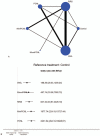
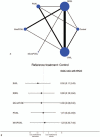
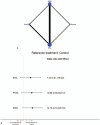
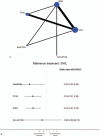

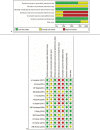
References
-
- Turk C, Petrik A, Sarica K, et al. EAU guidelines on interventional treatment for urolithiasis. Eur Urol 2016;69:475–82. - PubMed
-
- Sahinkanat T, Ekerbicer H, Onal B, et al. Evaluation of the effects of relationships between main spatial lower pole calyceal anatomic factors on the success of shock-wave lithotripsy in patients with lower pole kidney stones. Urology 2008;71:801–5. - PubMed
-
- Skolarikos A, Gross AJ, Krebs A, et al. Outcomes of flexible ureterorenoscopy for solitary renal stones in the CROES URS global study. J Urol 2015;194:137–43. - PubMed
-
- Bozzini G, Verze P, Arcaniolo D, et al. A prospective randomized comparison among SWL, PCNL and RIRS for lower calyceal stones less than 2 cm: a multicenter experience: a better understanding on the treatment options for lower pole stones. World J Urol 2017;35:1967–75. - PubMed
Publication types
MeSH terms
LinkOut - more resources
Full Text Sources

